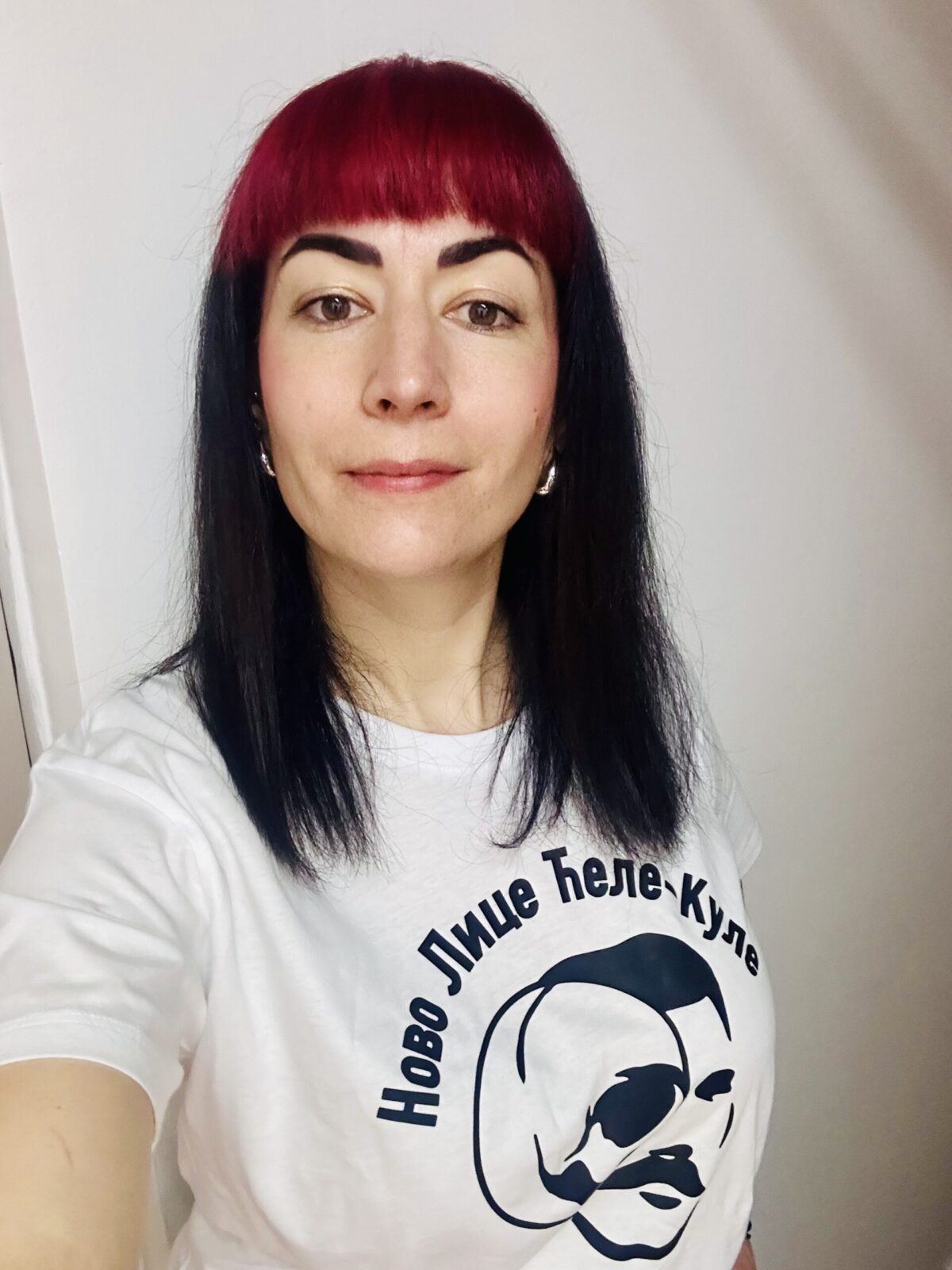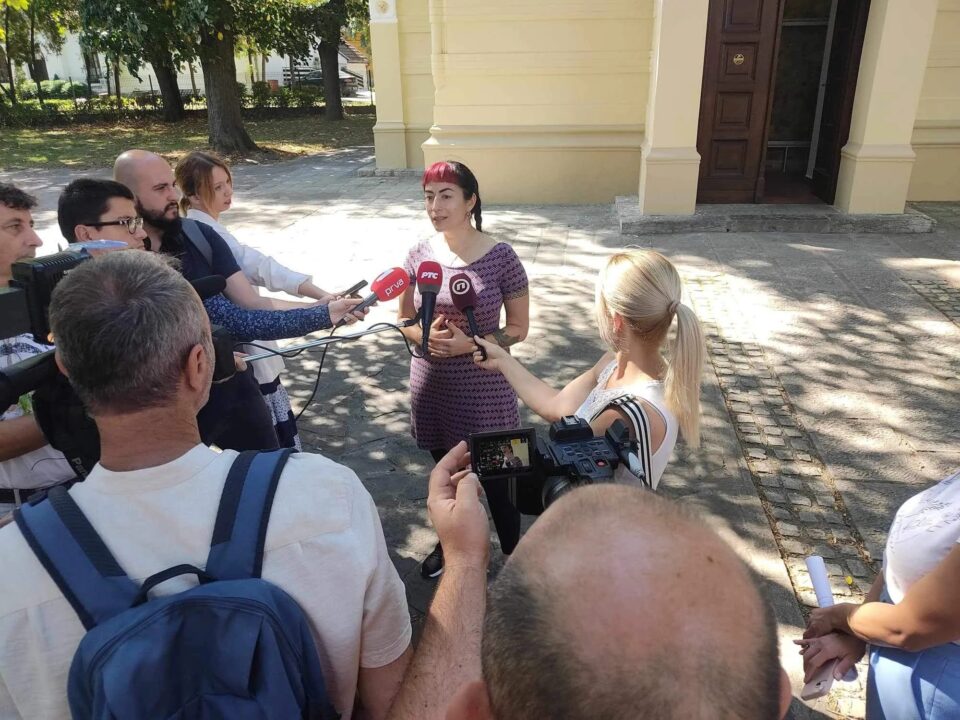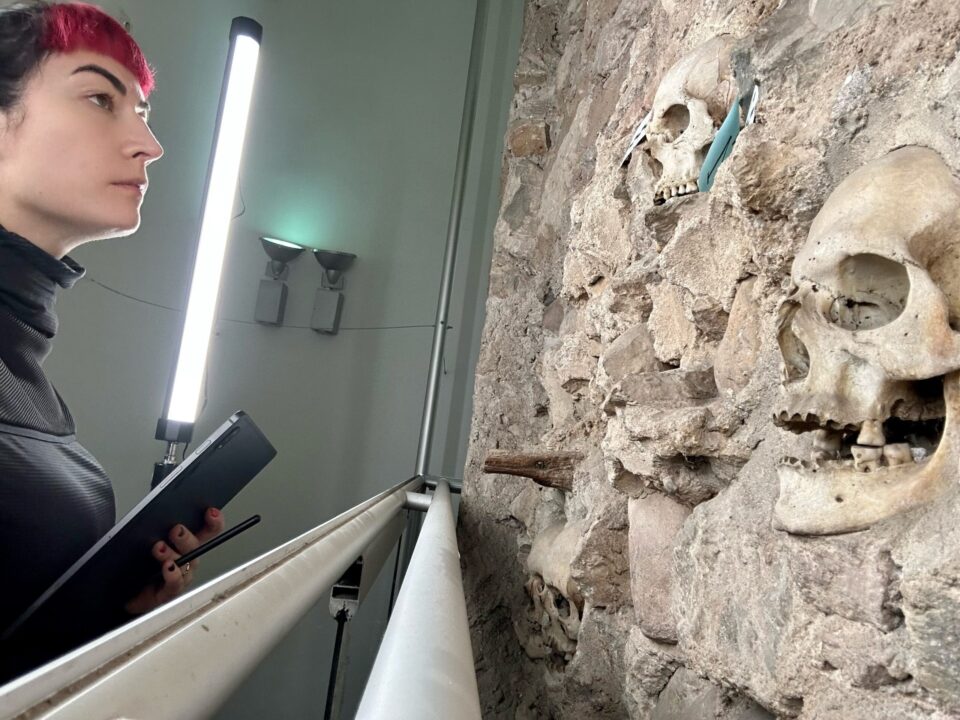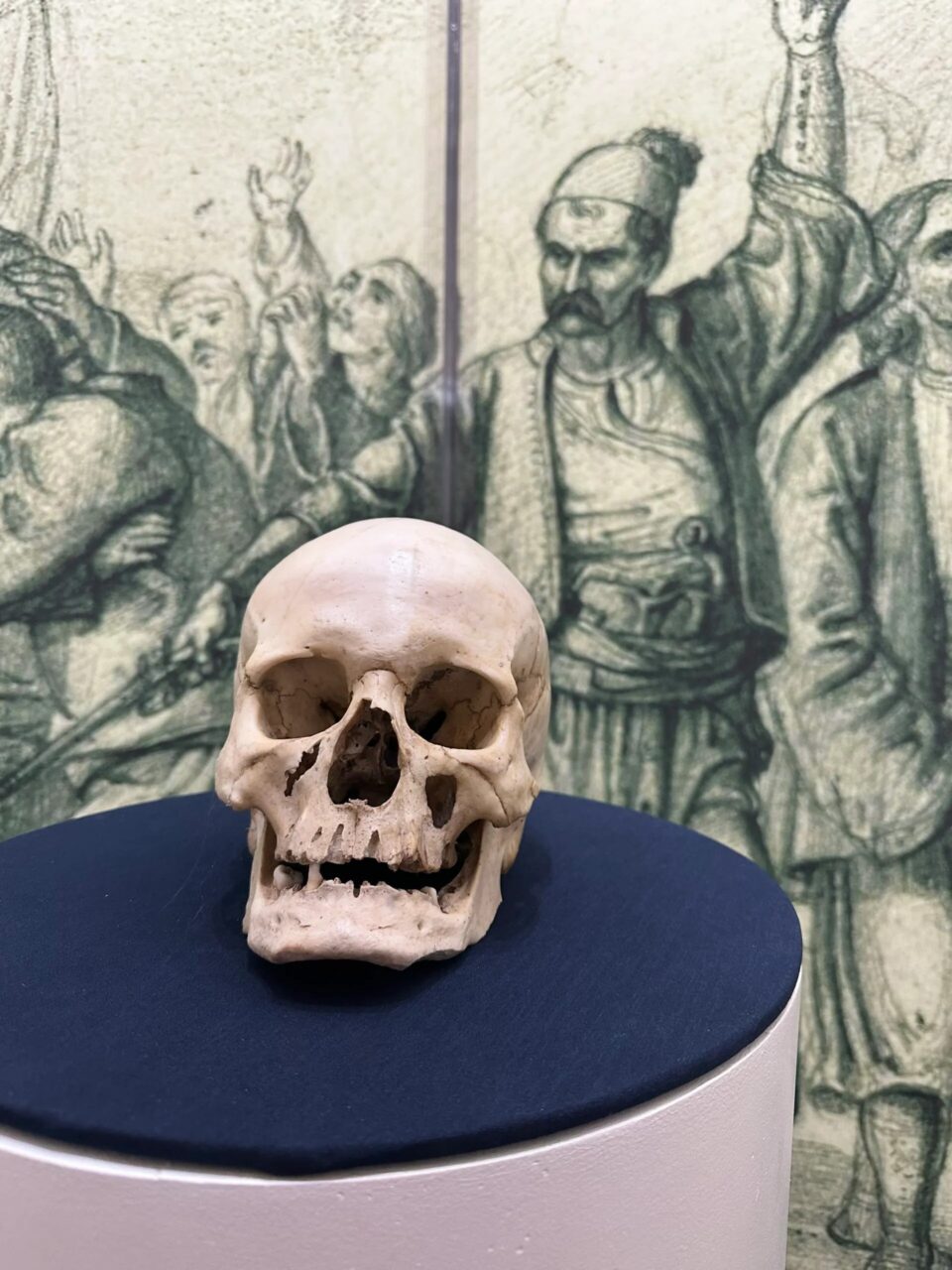The goal of our investigation is not just to focus on the central figures and leaders of the battle but to shed light on those whose names have been forgotten, whose faces have disappeared from memory, and who never had any portraits—the anonymous freedom fighters
 The project “New Face of Ćele Kula” has recently stirred quite a bit of public interest in Serbia, a country that often remains indifferent to archaeological discoveries and research. Why is that the case, and how can the relationship between the public and society as a whole be changed to better appreciate such attractions? We discussed this with Nataša Šarkić, PhD in Physical Anthropology, who is one of the members of the scientific team behind this project.
The project “New Face of Ćele Kula” has recently stirred quite a bit of public interest in Serbia, a country that often remains indifferent to archaeological discoveries and research. Why is that the case, and how can the relationship between the public and society as a whole be changed to better appreciate such attractions? We discussed this with Nataša Šarkić, PhD in Physical Anthropology, who is one of the members of the scientific team behind this project.
Archaeological discoveries attract a great deal of public attention, and we witness numerous spectacular headlines whenever something is discovered. However, it seems that public enthusiasm quickly wanes afterwards. Are archaeological discoveries, so to speak, like annual plants, or do they continually provide us with new insights?
We must keep in mind that archaeological excavation is a very slow process. It might take years to find anything spectacular that can be presented publicly and draw significant attention. Many excavations yield only one or two such findings. Some archaeological digs use social networks to post daily updates on their findings and the atmosphere at the sites, helping the wider public understand the process of searching and investigating rather than focusing solely on the discoveries.
Naturally, there’s the problem of just highlighting positive aspects of reality on social media, leaving out aspects like fatigue, sunburn, lack of sleep, and extreme heat. However, it is still a good way to introduce interested parties to our field. Not all colleagues are comfortable with this representation for various reasons. Some don’t like to expose themselves or their work, while others worry it might attract looters with metal detectors. After all, our job is to be scientists, not promoters.
The life of archaeological objects doesn’t end when excavation does. They go to museums and archaeological sites that might be transformed into visitor centres. But protecting an object is not enough; it also needs to be promoted to attract and maintain public interest.
 While society is simultaneously excited by discovery, we often find that the site is buried or relocated as if no one cares about what was found anymore. There are many examples: the Stambol Gate at Republic Square is covered by paving slabs, and the Roman aqueduct and tombs near the Assembly will be “relocated” or covered with sand.
While society is simultaneously excited by discovery, we often find that the site is buried or relocated as if no one cares about what was found anymore. There are many examples: the Stambol Gate at Republic Square is covered by paving slabs, and the Roman aqueduct and tombs near the Assembly will be “relocated” or covered with sand.
Belgrade holds a unique position at the confluence of the Sava and Danube rivers, with a strategic point just above it. Whoever controls Belgrade controls transport and trade, making it an attractive location for many civilizations and cultures. As a result, the modern city of Belgrade, especially its centre—from Republic Square to Kalemegdan and the area of today’s Dorćol—is built above many ancient cities. This is why new construction often leads to the possible destruction of archaeological sites.
Unfortunately, in Serbia, we still don’t fully understand the potential of archaeology. For the current government and even previous ones, archaeology is seen as a significant expense. We fail to realise that archaeology can attract visitors and bring money to the budget.
Regrettably, Serbia lacks basic infrastructure, and many hospitals in the provinces are missing essential equipment like ambulances, X-ray machines, or mammographs. In such an environment, asking for the protection of cultural heritage, building more museums, or employing more archaeologists often seems like an unnecessary luxury. Consequently, despite public enthusiasm about discoveries, when it comes to preservation or strategies for showcasing and safeguarding these finds, it is often seen as unnecessary, too expensive, or a lower priority compared to more basic needs, which is understandable.
One solution could be better promotion of archaeology, making museums more self-sustaining and showing that archaeology can be an economic asset.
Facial reconstructions in Serbian archaeology have been done only a few times
How significant is the “Novo Lice Ćele Kule” project that you are working on?
The Novo Lice Ćele Kule project is unique for various reasons. First, it is the first project in Serbia ever funded through crowdfunding, with all the money collected from citizen donations. Interestingly, the first chapel built to protect Ćele Kula at the end of the 19th century was also funded by citizen donations.
Second, this will be the first anthropological analysis of skulls built into the skull tower. This is particularly significant because Ćele Kula is one of Serbia’s most valuable national monuments, yet it has never been studied in this way.
Third, the outcome of the project will be the facial reconstruction of each well-preserved skull from Ćele Kula, including the skull of Stevan Sindjelić, the leader of the uprising. Although Sindjelić’s skull is not currently in the tower but is kept under a glass bell inside the chapel, it will also be reconstructed. This project represents a major advancement, as facial reconstructions in Serbian archaeology have been done only a few times.
It’s also important to emphasize that, as we previously discussed the challenge of attracting attention to archaeological projects, we received excellent reactions from people. This project gained a lot of media attention, including traditional media, social media, and podcasts. A significant aspect is that this project is carried out voluntarily, showcasing remarkable enthusiasm that has been recognized.
Moreover, the model we will have at the end of the project doesn’t require special equipment or significant investment to maintain. Everything will be digital, making it easy to transport and present.
 What does Ćele Kula tell us about Serbian history? Can we draw any lessons from it?
What does Ćele Kula tell us about Serbian history? Can we draw any lessons from it?
The most interesting aspect of the excavation and investigation of Ćele Kula is realizing how little we know about this historical period, despite its recent occurrence and deep connection with national identity. We discovered that many historical facts are either untrue or incomplete. For example, it is known that around 8,000 to 10,000 people died in the Battle of Čegar, depending on the source, and that 952 skulls were built into Ćele Kula. However, we do not know where the bodies are buried, which is unusual because the location of this possible mass grave remains unknown.
Another historical fact proven wrong is the claim that all victims were decapitated, with their noses and ears cut off and their facial skin removed. We found only two marks of decapitation and no evidence supporting the mutilation described in historical sources.
Additionally, when we began analyzing historical sources, we assumed we knew what Stevan Sindjelić looked like and wanted to compare his skull with contemporary drawings. However, we discovered that all portraits of Sindjelić dated from the early 20th century, over a century after his death. Thus, we have no accurate depiction of his appearance. This finding suggests that many things taught in schoolbooks may not be true or, at least, are unproven.
The goal of our investigation is not just to focus on the central figures and leaders of the battle but to shed light on those whose names have been forgotten, whose faces have disappeared from memory, and who never had any portraits—the anonymous freedom fighters. We aim to tell their stories by providing details about their lives, ages, injuries, and diseases, and, of course, reconstructing their faces.
Anthropological research revealed the ages of the participants: most were young males between 20 and 25 years old, but shockingly, there were children as young as 11 years old. Many were teenagers between 15 and 18, and one person was older than 50. This tells us a lot about the harsh conditions in Serbia at that time, where everyone, regardless of age, was required to participate in the battle for freedom.
The project “Novo lice Ćele kule” is carried out voluntarily, showcasing remarkable enthusiasm that has been recognized
As someone who lives and works in Spain and frequently collaborates on international projects, how would you describe archaeology in our country compared to Spain and other countries where you have worked?
A comparison between Spain and Serbia might not be entirely objective, as Spain is a much larger and wealthier country that invests heavily in its cultural heritage and promotion, with a rich colonial history. Instead, comparing Serbia with Croatia could be more realistic, given our shared history and the fact that both countries were part of Yugoslavia and had a socialist background.
We should look at our neighbours as positive examples. While Croatia does have more access to European funds, even when excavations are not EU-funded, they still manage to secure the necessary funds. They successfully transform their national heritage into tourist attractions, which supports sustainability and provides incentives for further excavations.
 We don’t have much preserved in Serbia that would attract foreign tourists. However, there are significant archaeological sites. What is it about our country that could draw global attention?
We don’t have much preserved in Serbia that would attract foreign tourists. However, there are significant archaeological sites. What is it about our country that could draw global attention?
I truly believe that Serbia is incredibly rich in cultural heritage, but what is lacking is promotion. We cannot expect people to be aware of the importance and richness of our culture if institutions are not working on its promotion. For instance, the so-called Bosnian pyramids, which are a fabricated concept, attract between 400,000 and 500,000 visitors. Real archaeological excavations should be able to attract similar attention, but the Bosnian pyramids receive extensive media coverage and promotion for this false heritage and false archaeology.
Focusing on new media communication could be key. Newspapers and television may not be enough because these traditional media are largely ignored by millennials and even more so by younger generations. If cultural institutions like museums, visitor centres, and archaeological sites want to thrive, they must adapt to new forms of communication and engage with younger audiences. For example, the “Night of Museums” attracts many people who might not normally visit museums. This success is due to the special events and promotions planned for that night.